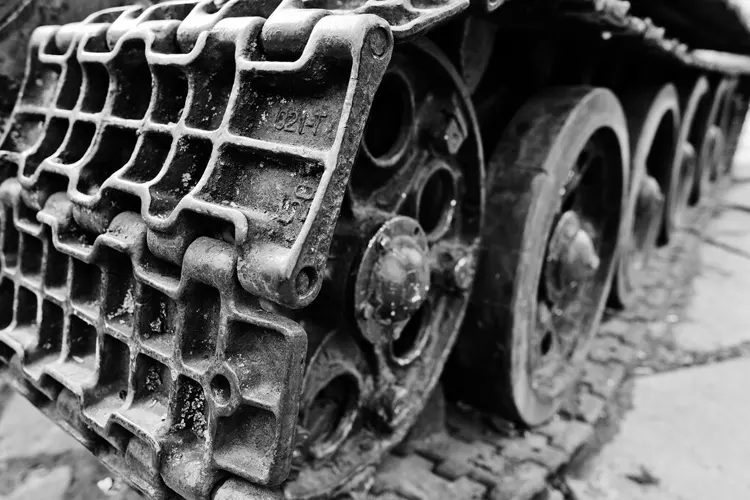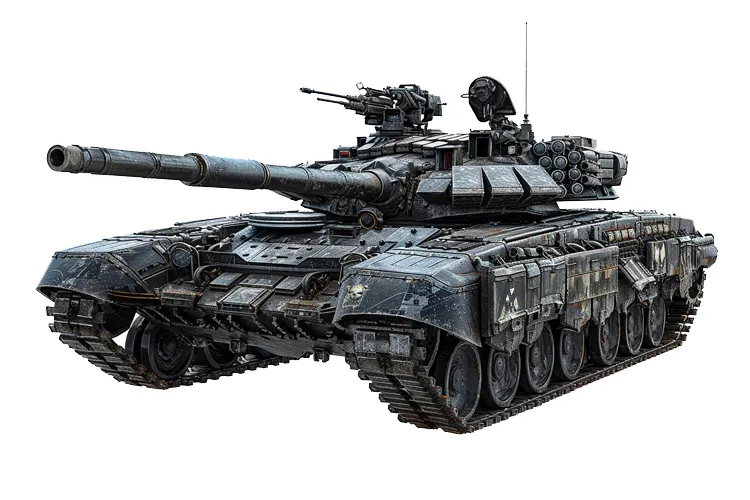
Introduction
Weight savings is no longer a nicety in contemporary defence systems—it's a design requirement. From artillery to unmanned vehicles, naval equipment to secure vehicle platforms, mass reduction makes the platform more mobile, increases payload or fuel capacity, and facilitates easier deployment logistics. This shift places intense performance pressure on component design and material selection. Against that backdrop, investment castings for defense have emerged as a strategic solution, enabling intricate shapes, thin walls, and high-strength alloys in a near-net shape format.
This manufacturing route supports the consolidation of multiple parts, minimizes machining, and ensures consistent accuracy, critical attributes for meeting rigorous military standards.
Alloy Innovations: The Key to Lightweight Performance
Material choice underpins how lightweight and rugged a defence part can be. Investment casting supports a wide range of alloys tailored to mission demands:
- Aluminium Alloys (A356, A357) offer high specific strength with an approximate 35–40% weight reduction versus steel, well suited for housings and structural brackets, but maintaining corrosion resistance and machinability.
- Stainless steels and 17 4 PH provide toughness and moderate weight with superior dimensional stability; commonly found in mounts and critical brackets.
- Armor steels and nickel alloys are often used in high-stress, high-impact situations such as ordnance housings and engine cases, which require these materials to have high impact resistance.
- Titanium (especially Ti-6Al-4V) has the best strength-to-weight ratio. Interestingly, the BAE Systems M777 lightweight howitzer features over two dozen titanium structural castings made through investment casting—a confirmed case of weight-critical defence equipment.
By leveraging casting-compatible alloys, designers can optimize every gram without compromising fatigue strength or durability.
Thin-Wall & Precision Geometry: Capturing Complexity at Low Mass
A core advantage of investment castings for defence is the ability to produce ultrathin, complex geometries:
- Parts with wall thickness as low as 0.6mm and surface tolerances within ±0.1mm are routinely achieved, enabling precision-fit parts with minimal secondary operations.
- Investment casting handles narrow grooves, internal channels, and filleted radii impossible via typical machining—essential for fuel injectors, aerospace brackets, and structural housings.
- Vacuum and counter gravity filling techniques reduce porosity, improve metal yield (up to 60–95%), and boost internal soundness compared to gravity pouring, enhancing reliability under dynamic loads.
- Computer aided simulation tools allow engineers to model shell thickness, gating, thermal gradients, and solidification paths, optimizing casting outcomes before physical prototypes are made.
These capabilities support significant consolidation: multiple functional components become single cast units, cutting assembly mass, eliminating welds, and reducing inspection complexity.
Consolidation Strategy: Simplified, Strong, and Lighter
Traditional assemblies generally rely on several parts welded or fastened together, which results in increased weight, tolerance stack-ups, and possible failure points. By contrast, investment castings for defence can combine base structures, mounting bosses, internal cavities, and mounting features into a single piece.
- This consolidation delivers up to 25% weight reduction compared to fabricated assemblies, while also decreasing machining and inspection steps.
- For high stress components like engine brackets or turret frames, a unified casting reduces stress risers, improves fatigue life, and strengthens durability.
- A real-world reference: the titanium castings used in M777 artillery reduced mounting bracket weight by approximately 12%, and machining cycles dropped by over 60%, without compromising structural integrity.

The combination of alloy performance and integrated geometry makes investment castings especially suited for weight sensitive, high stress defence applications.
Surface Quality & Internal Integrity: Non-Negotiable Standards
Defence parts demand impeccable surface finishes and internal reliability. Investment casting delivers:
- Typical surface roughness of Ra 1.6 to 3.2µm, minimizing post-cast machining and enhancing fatigue resistance.
- Dimensional tolerances of CT4–CT7 class (±0.1mm or better), meeting tight fit requirements for mating assemblies or aerospace tolerances.
- Internal flaw detection via X-ray and ultrasonic inspection is standard, essential for parts subjected to extreme loads or thermal cycling.
- Vacuum or counter gravity filling lowers gas entrapment and shrinkage porosity, key to consistent mechanical properties and structural soundness.
Combined with proper dewaxing, shell preparation, and ceramic slurry techniques, this attention to integrity ensures mission critical parts are fit for extreme conditions.
Defence Domain Applications Driving Lightweight Casting
Investment casting serves a spectrum of defence-led use cases:
- Artillery and Mobile Weapons: The M777 howitzer is a pioneering use case. More than two dozen structural castings out of Ti 6Al 4V endure high shock loads and are corrosion resistant, supporting over 900 MRBSA (Mean-Rounds-Between-System-Abort) performance across long firing cycles.
- Aircraft Engines and UAV Components: Turbine blades, impellers, and compressor parts frequently use nickel or cobalt-based superalloys, which are cast with complex cooling channels to make them endure thermal stress and also help to reduce incoming mass by cooling.
- Missile Structures and Guidance Housings: Internal cavity, fin, or aerodynamic details create parts requiring precision cast shapes—stainless steel, bronze, or machined alloys—produced in ND compliant foundries.
- Armoured Vehicle Systems: Steering arms, transmission components, suspension brackets, fire-control housings—cast in armor-grade steel or stainless steel—for strength with fewer joins and weight savings over fabricated parts.
- Electronic & Radar Housing: Equipment shells requiring EMI shielding and robust structure use cast stainless or duplex alloys, eliminating fasteners and offering monolithic rigidity.
Whether missile fins, UAV housing, engine casings, or armor mounts, investment castings for defence deliver functional, lightweight precision.
Quality Infrastructure & Indian Capability
Producers supplying defence have to meet quality and traceability standards: ISO 9001, AS9100, NADCAP, and (where applicable) ITAR or NIST certification for export control compliance.
In India, corporations like Super Quali Cast (India) Pvt. Ltd., located in Rajkot, possess sophisticated precision foundries that can supply alloy steel, duplex steel, superalloy, and stainless-steel castings. Their facility spans 3 acres, manages ~2,400tonnes annually, and employs robotic coating, in house machining, ERP-based traceability, and chemical–mechanical labs for rigorous quality control.
This demonstrates how domestic foundries now meet global standards and support strategic defence manufacturing requirements.
Design, Simulation & Digital Integration
Achieving lightweight casting performance begins at the design stage:
- Engineers use CAD and CAE tools to refine geometry, analyze thermal and mechanical stresses, and minimize material where possible—often optimizing gating, shell layouts, and directional solidification paths.
- Simulations of casting fill patterns, solidification behavior, and cooling rates avoid defects and refine geometric feasibility before costly tooling.
- Use of 3D printed wax patterns or ceramic cores allows ultra complex internal channels or conformal cooling, and accelerates prototyping timelines with minimal tooling time or cost.
This integration ensures each cast component is lightweight by design, not just by material substitution.
Cost Lifecycle: Efficiency Beyond Casting
While the upfront tooling and process cost of investment castings for defence can be higher than traditional machining, the lifecycle logic favors long-term efficiency:
- Near-net-shape casting reduces scrap, secondary machining, and assembly labor.
- Consolidated part design reduces fasteners, welding inspection, and associated failure points.
- Material lightweighting often yields operational savings: e.g., a 5kg reduction in UAV weight can extend flight endurance by ~10%.
- High fatigue-grade alloys and defect-free castings lower field maintenance and warranty exposure.
Design strategies amplify ROI over multiple production runs, especially when defence systems require repeatable reliability under stressful conditions.
Sustainability & Environmental Benefits
Investment casting supports sustainable manufacturing:
- Recycling efficiencies exceed 90% for wax and gating systems; ceramic shells can be recycled into inert fill or safely disposed of.
- Near-net-shape workflows reduce material waste and energy used in machining.
- As defence planners emphasize environmental readiness, cast components contribute to greener supply chains and carbon-conscious manufacturing.
Near-Future Forward: Emerging Technologies
Defence demand is intersecting with digital and material innovation:
- Additive-integrated casting allows lattice structures or graded alloys within a single cast, opening doors for ultra-light, high-strength designs.
- Integration of embedded sensors or smart alloy cores allows real-time strain feedback or self-healing capability.
- Real-time process monitoring and machine learning adjustments during casting improve yield and reduce scrap.
- Sustainable binder systems and eco-derived ceramics reduce footprint—aligned with defence-sector carbon goals.
Such innovations amplify the impact of investment casting in next-generation lightweight defence systems.
Strategic Summary
- Investment castings for defence deliver unmatched precision, alloy flexibility, structural consolidation, and weight optimization.
- Applications range from artillery (e.g., casting M777 titanium structural parts) to UAV housings, engine components, missile fins, and armored-vehicle mounts.
- Indian foundries like Super Quali Cast (India) Pvt. Ltd are fully capable and compliant with global standards.
- Advanced design tools, simulation, and additive methods refine geometry and material use.
- Lifecycle savings—from fuel to maintenance—make lightweight casts economically strategic.
- Continued innovation in materials and digital integration positions investment casting as the backbone of future defence manufacturing.
Implementation Blueprint for Defence Manufacturers
To adopt this methodology:
Initial Assessment
Identify candidate components (mounts, housings, blades) where complexity, weight, or precision burdens current fabrication.
Alloy Selection & Simulation
Choose lightweight alloys—aluminium, titanium, nickel—and use casting simulations to validate fill, solidification, and final tolerances.
Prototype via 3D-printed patterns or cores
Rapidly iterate design and test fit before investing in shell or tooling.
Quality Assurance Planning
Define NDT protocols: X ray, ultrasonic, surface inspection, and dimensional metrology per AS9100 or NADCAP.
Supply Chain & Foundry
Partner with certified foundries that can cast, machine, and validate parts per defence standards.
Lifecycle Cost Modeling
Project long-term ROI by comparing traditional machining vs casting—accounting for weight savings, efficiency, waste, and maintenance.
Scaling & Innovation Integration
As volume increases, iterate toward additive-integrated cores, sensor-embedded parts, or eco-friendly binders.
Final Takeaway
Strong defence engineering requires parts that are light and strong, supplied with accuracy and economy. Defence investment castings are an advanced manufacturing answer that satisfies all the requirements: advanced alloys, complex geometries, structural integration, quality traceability, and life-cycle return on investment. From titanium gun mounts to UAV frames, investment casting taps the design potential that welded or machined assemblies simply can't fulfill.
Defence OEMs hoping to minimize mass, enhance reliability, and decrease operating expenses while adopting certified quality will find this procedure at the forefront of next-generation systems. Supported by capable partners, visionary design approaches, and simulation-led workflows, the lightweight defence manufacturing future is accessible and scalable.
